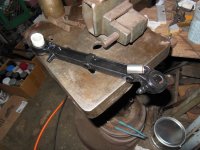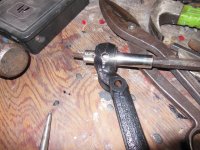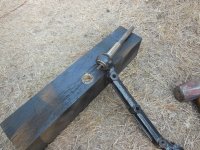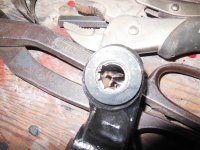Well I have sent those little brass bushing out to be pressed and honed in the past. This time I thought I would try myself. Would I need a press? Should I push one out as I try pushing the new bush in place? Anybody have any luck with DIY method.
Thanks Steve
Thanks Steve

 Hi Guest!
Hi Guest!

 smilie in place of the real @
smilie in place of the real @
 Pretty Please - add it to our Events forum(s) and add to the calendar! >>
Pretty Please - add it to our Events forum(s) and add to the calendar! >> 






